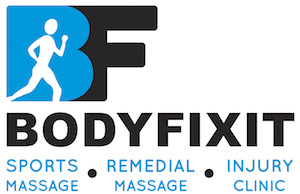We all know stress can manifest in unexpected ways, but few things are as frustrating as feeling it manifest in your neck. That constant ache, the stiffness that limits movement, it can truly disrupt your daily life. This week, let’s explore the link between stress and neck pain, why it’s particularly bothersome, and most importantly, what you can do to find relief.
Stress and the Knotty Connection
When we’re stressed, our bodies go into fight-or-flight mode. Muscles tense up, including those in the neck and shoulders. Over time, this sustained tension can lead to painful trigger points or knots, causing discomfort and impacting movement. It’s a vicious cycle: the pain makes us tense up further, exacerbating the issue.
Stress-related pain in this region is typically the result of emotional or mental anxiety.
This can directly affect the muscles and nerves that run through your shoulders, neck, and spine.
Everyday Life on Hold
Neck pain caused by stress can make simple tasks feel like an uphill battle. Turning your head to check traffic becomes a chore, working at a computer feels agonizing, and even enjoying a good book can be hampered by discomfort. It affects our sleep, our mood, and our overall well-being.
Solutions for a More Serene Neck:
The good news is, you don’t have to live with constant neck tension! Here are some effective solutions to consider:
1. Melt the Stress Away: Regular massage therapy, including targeted techniques like deep tissue or trigger point therapy, can loosen those tight muscles and alleviate pain.
2. Find Your Flow: Movement is key! Gentle exercises like Pilates or yoga can stretch and strengthen your neck muscles, improving flexibility and promoting relaxation. It also releases endorphins, a hormone that dulls pain and generates feelings of well-being.
3. Breathe Deeply: Stress often leads to shallow breathing, which tightens the neck muscles further. Practicing conscious breathing exercises can help calm your mind and body, reducing tension.
4. Tech Timeout: Take breaks from hunching over screens! Adjust your workstation ergonomics, and get up and move around regularly to prevent muscle strain.

5. Listen to Your Body: If the pain persists or worsens, consult a healthcare professional. They can diagnose the cause and recommend further treatment options.
6. Neck stretches – If done regularly, stretching exercises for the neck can loosen muscle tightness and maintain or expand range of motion for the neck. Read on for specific stretches…
7. Meditation – Practicing meditation is a good way to calm your thoughts and anxieties.
8. Enlisting help from family and friends – You don’t have to tackle stress alone; let your family and friends help carry the load.
9. Prioritising – You’re not a superhero! Let inconsequential things go if they’re taking a toll on your health. Focus on what’s most important and don’t worry if things further down the priority list get delayed or left undone for a while.

Stretches for neck and shoulder pain
Here are a few simple, yet effective stretches you can incorporate throughout your day.
- Neck exercises – Lower your chin to your chest for 15 seconds and gently let the weight of your head create a stretch through your upper back. Next, gently drop your head towards the right for 15 seconds, then to the left side for 15 seconds.
- Shoulder to ear – Sit with a straight spine and gently tilt your head towards your left shoulder. You can go a little deeper into this stretch by gently pulling your head down slightly farther with your right hand, until you feel a gentle pull. Hold this position for 30 seconds and repeat on the other side.
- Shoulder rolls – While sitting or standing, maintain good posture and roll your shoulders up, back, then down. Repeat this circular motion 10 times. Then do the opposite and roll your shoulders up, forward, then down. Repeat 10 times.
- Shoulder raises – While standing or sitting, put your arms down by your side, straighten your back. Then slowly lift your shoulders up toward your ears. Hold for a few seconds, then slowly lower your shoulders back down. Repeat this action 5 times.
- Cross arm stretch – Bring your right arm across your chest and bring your left hand up to support it by slightly pushing your right arm into your chest to get a deeper, yet gentle stretch. Hold for 30 seconds and repeat on the opposite side.
- Forward bend – Stand up straight with your feet slightly wider than hip distance apart. Interlace your hands behind your back. You should feel a gentle pull in your chest. With a slight bend in the knees fold forward, hinging at the hips, and bring your arms up towards the ceiling. Make sure there is no tension or discomfort in your neck muscles by allowing your head to hang down freely. Continue to hold this stretch for 60 seconds.


